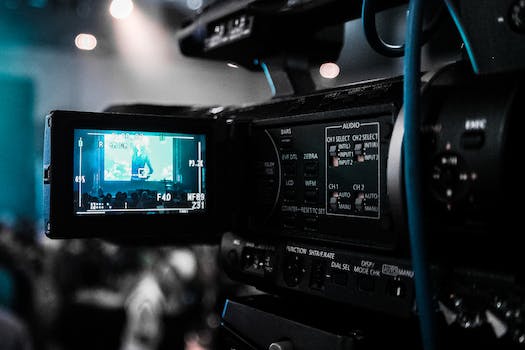When it comes to discussing movies, it is essential to understand the difference between a film review and a film analysis. While both serve as forms of critique, they approach the subject matter from distinct perspectives. A film review provides a brief overview of the movie, focusing on its plot, acting, and overall entertainment value. On the other hand, a film analysis delves deeper into the artistic and thematic elements of the film, exploring its underlying messages, symbolism, and cinematography. By comprehending this distinction, one can better appreciate the various perspectives through which movies can be evaluated and appreciated.
- 1. Introduction
- 1.1. Definition of film review
- 1.2. Definition of film analysis
- 1.3. Purpose of film review
- 1.4. Purpose of film analysis
- 1.5. Overview of the article
- 2. Key Characteristics of Film Reviews
- 2.1. Brief summary of the film
- 2.2. Evaluation of the film’s elements
- 2.3. Opinions and personal reactions
- 2.4. Focus on entertainment value
- 2.5. Audience-oriented perspective
- 3. Key Characteristics of Film Analysis
1. Introduction
Film review and film analysis are two distinct forms of writing that focus on different aspects of a film. While both types of writing involve discussing a movie, they have different goals and approaches. A film review aims to provide an evaluation and recommendation of a film, often for a general audience. It focuses on the overall entertainment value, plot, performances, and technical aspects of the film. On the other hand, film analysis delves deeper into the artistic, thematic, and cultural elements of a movie. It seeks to interpret and understand the film’s message, symbolism, cinematography, and other cinematic techniques. Understanding the distinction between film review and film analysis is crucial for both writers and readers, as it helps in determining the purpose and scope of the writing.
1.1. Definition of film review
A film review is a written analysis and evaluation of a film, typically written by a critic or a knowledgeable viewer. It aims to provide an overview of the film, its plot, themes, and performance, while also giving an opinion on its strengths and weaknesses. A film review often includes a rating or recommendation to guide the readers in deciding whether to watch the film or not. It serves as a form of critique and commentary, helping the audience to better understand and appreciate the film.
1.2. Definition of film analysis
Film analysis refers to the critical examination and interpretation of a film’s components, such as its narrative structure, cinematography, editing techniques, sound design, and thematic elements. It involves dissecting the film’s various aspects to gain a deeper understanding of its artistic and storytelling choices. Film analysis aims to explore the underlying meanings, symbolism, social and cultural contexts, and aesthetic qualities of a film, ultimately providing insightful and thought-provoking interpretations to enhance the viewer’s appreciation and understanding of the film.
1.3. Purpose of film review
Film reviews serve the purpose of providing an evaluation and critique of a specific film. They aim to inform potential viewers about the quality, plot, and overall experience of watching the film. A film review typically includes a brief summary of the movie’s storyline, followed by an analysis of its strengths and weaknesses. It may also touch upon aspects such as performances, direction, cinematography, and soundtrack. The primary goal of a film review is to help readers make an informed decision about whether to watch the movie or not. Unlike a film analysis, which delves deeper into the artistic and thematic elements of a film, a review focuses more on the overall entertainment value and audience appeal.
1.4. Purpose of film analysis
Film analysis serves the purpose of providing a deeper understanding and interpretation of a film. It goes beyond the surface-level observations and critiques found in film reviews. While film reviews primarily focus on evaluating the overall quality and entertainment value of a film, film analysis dives into the various elements and techniques used by filmmakers to convey their message. It aims to dissect the film’s plot, characters, themes, symbolism, cinematography, and other aspects to uncover hidden meanings and subtexts. By analyzing the artistic choices made by the filmmakers, a film analysis helps viewers gain a more nuanced and insightful perspective on the film’s intended message and artistic merits.
1.5. Overview of the article
Film reviews and film analysis are two distinct types of writing that serve different purposes in the world of cinema. While both involve the examination and evaluation of films, they approach them from different angles and with different goals in mind.
A film review is typically a brief and concise piece of writing that provides an overview of a movie and offers a subjective opinion on its quality. It focuses on summarizing the plot, discussing the performances of the actors, commenting on the directing and cinematography, and evaluating the overall entertainment value of the film. The primary aim of a film review is to inform the reader about whether or not they should watch the movie.
On the other hand, a film analysis delves deeper into the various elements and techniques used in a film to explore its themes, symbolism, and artistic merits. It involves a more in-depth analysis of the narrative structure, character development, visual aesthetics, sound design, and other cinematic aspects. A film analysis aims to provide a deeper understanding and interpretation of the movie, often drawing connections to larger social, cultural, or historical contexts.
While both film reviews and film analysis may provide valuable insights for audiences, they have distinct purposes and approaches. Understanding the difference between these two types of writing is essential for readers who seek either a subjective opinion on a film’s entertainment value or a more profound exploration of its artistic and intellectual aspects.
2. Key Characteristics of Film Reviews
Film reviews are a specific type of critique that focuses on analyzing and evaluating the various aspects of a film. There are several key characteristics that distinguish film reviews from film analysis. Firstly, film reviews are typically shorter and more concise, providing a brief overview of the film and its main elements. They aim to give the reader a general sense of the movie’s plot, genre, and overall quality.
Secondly, film reviews often incorporate a subjective element, as they reflect the personal opinion and interpretation of the reviewer. While film analysis strives to be objective and analytical, film reviews offer the reviewer’s individual perspective on the movie, including their likes, dislikes, and recommendations.
Furthermore, film reviews tend to be more accessible to a wider audience, using language and style that is easily understandable and relatable. Unlike film analysis, which may delve into complex theories and academic discussions, film reviews aim to engage and inform a broader range of readers, including casual moviegoers.
Lastly, film reviews often include a rating or score, which serves as a quick summary of the reviewer’s overall assessment of the film. This rating provides a convenient way for readers to gauge the reviewer’s opinion and make an informed decision about whether or not to watch the movie.
In conclusion, film reviews and film analysis are distinct forms of critique. Film reviews are concise, subjective, accessible, and often include a rating, while film analysis is more objective, in-depth, and academic in nature.
2.1. Brief summary of the film
The brief summary of the film provides an overview of the plot, main characters, and central theme of the movie. It aims to give the readers a general idea of what the film is about without revealing too many details. The summary usually includes a concise description of the setting and the main conflict or problem that the characters face. It is important to keep the summary objective and avoid personal opinions or judgments about the film.
2.2. Evaluation of the film’s elements
Evaluation of the film’s elements:
When it comes to film reviews, one of the key characteristics is the evaluation of the various elements that make up a film. These elements include the story or narrative, the acting performances, the cinematography, the directing, the editing, the sound design, and the overall production value.
In the evaluation process, the reviewer assesses how well each of these elements contributes to the overall quality and impact of the film. They analyze whether the story is engaging and coherent, if the acting performances are convincing and memorable, if the cinematography effectively enhances the storytelling, if the directing is skillful in guiding the audience’s attention, if the editing is seamless and enhances the pacing, if the sound design creates an immersive experience, and if the production value is visually appealing and professional.
By evaluating these elements, film reviews provide readers with insights into the strengths and weaknesses of a film. This evaluation helps potential viewers to determine whether a particular film aligns with their tastes and preferences, and it also allows them to appreciate the craftsmanship and artistry involved in the filmmaking process.
2.3. Opinions and personal reactions
Opinions and personal reactions play a crucial role in film reviews. These sections provide the writer’s subjective thoughts and feelings about the film being reviewed. It is where the writer expresses their likes, dislikes, and overall impressions of the movie. Opinions help the reader understand the reviewer’s perspective and can influence their decision to watch or skip the film. Personal reactions add a human touch to the review, making it relatable and engaging for the audience. This section allows the writer to connect with the reader on an emotional level and share their personal experiences and insights. It is important for the opinions and personal reactions to be supported by specific examples from the film, providing evidence for the reviewer’s claims. Overall, this section adds depth and individuality to the film review, making it more than just a summary or analysis.
2.4. Focus on entertainment value
When it comes to writing film reviews, one of the key characteristics to focus on is the entertainment value. Unlike film analysis, where the primary goal is to examine and interpret the various elements of a film, a film review aims to provide an enjoyable and engaging experience for the readers.
To achieve this, a proficient SEO writer should incorporate elements that make the review entertaining. This can include injecting humor, using vivid and descriptive language, and offering personal insights and opinions. By making the review entertaining, readers are more likely to be captivated and interested in the content.
Furthermore, a film review should also provide a balanced assessment of the movie. While it is important to express personal opinions, it is equally crucial to consider the target audience and provide a fair evaluation. This means discussing both the positive and negative aspects of the film, highlighting its strengths and weaknesses, and ultimately allowing the readers to form their own opinions.
Lastly, a well-written film review should be concise and to the point. Readers often look for quick summaries and concise evaluations to help them decide whether or not to watch a particular movie. Therefore, a proficient SEO writer should strive to deliver the necessary information in a clear and concise manner, avoiding unnecessary tangents or excessive length.
In conclusion, focusing on the entertainment value is a key characteristic of writing film reviews. By incorporating humor, offering personal insights, providing a balanced assessment, and being concise, a proficient SEO writer can create engaging and informative reviews that resonate with readers.
2.5. Audience-oriented perspective
When writing film reviews, it is essential to adopt an audience-oriented perspective. This means that the content should be tailored to the specific target audience who will be reading the review. Understanding the preferences, interests, and expectations of the audience is crucial in order to provide a review that resonates with them.
To write an audience-oriented film review, it is important to consider the following key characteristics:
1. Clarity and Conciseness: The review should be clear, concise, and easily understandable for the target audience. Using simple language and avoiding jargon or technical terms ensures that the review can be comprehended by a wide range of readers.
2. Focus on Film Elements: A good film review focuses on various elements of the film, such as the plot, acting, cinematography, sound design, and editing. Analyzing these elements and providing insights about their strengths and weaknesses helps the audience to evaluate the film more effectively.
3. Personal Opinion: While being objective is important in a film review, it is also essential to include personal opinions and subjective reactions. Sharing one’s own emotional response and highlighting personal preferences can help the audience connect with the reviewer and understand the reviewer’s perspective.
4. Avoiding Spoilers: Film reviews should be cautious about revealing major plot twists or spoilers that could ruin the viewing experience for the audience. It is crucial to strike a balance between providing enough information to inform the readers and keeping the surprises intact.
5. Comparisons and Context: Providing comparisons to other films or genres can assist the audience in understanding the film’s unique qualities. Additionally, offering some context about the director’s previous works or the film’s historical background can enhance the reader’s comprehension and appreciation of the film.
By considering these key characteristics and adopting an audience-oriented perspective, a film reviewer can effectively engage and inform their target audience.
3. Key Characteristics of Film Analysis
Film analysis is a crucial aspect of understanding and appreciating the art of cinema. It goes beyond a simple review of a film and delves into deeper analysis and interpretation. There are several key characteristics that distinguish film analysis from film reviews.
Firstly, film analysis involves a comprehensive examination of various elements of a film, such as its narrative structure, cinematography, editing techniques, sound design, and symbolism. It aims to analyze how these elements contribute to the overall meaning and message of the film.
Secondly, film analysis requires a critical and analytical approach. It goes beyond personal opinions and preferences and focuses on evaluating the artistic and technical aspects of the film. This involves analyzing the director’s choices, the performances of the actors, and the overall impact of the film on its audience.
Furthermore, film analysis often explores the historical, cultural, and social contexts in which a film was made. It considers how these factors influence the film’s themes, characters, and storytelling techniques. By examining the broader context, film analysis provides deeper insights into the film’s significance and relevance.
Lastly, film analysis aims to interpret the film’s meaning and symbolism. It looks beyond the surface-level plot and explores the underlying themes, motifs, and messages conveyed by the filmmakers. This interpretation can involve analyzing the use of metaphors, allegories, and visual symbolism to uncover hidden meanings.
Overall, film analysis requires a comprehensive and in-depth understanding of the medium of cinema. It goes beyond a simple review and engages with the artistic, technical, and thematic aspects of a film. By examining various elements and interpreting their meaning, film analysis offers a deeper appreciation and understanding of the cinematic experience.
3.1. In-depth examination of the film
In-depth examination of the film:
Film analysis involves a comprehensive and detailed examination of a film, going beyond a simple review. It aims to uncover the underlying themes, messages, and techniques employed by the filmmaker to convey their vision. A film analysis delves deep into the various elements that make up the film, such as cinematography, editing, sound design, acting, and storytelling.
When conducting an in-depth examination of a film, one must consider the director’s choices regarding camera angles, lighting, and shot composition. These technical aspects can greatly influence the overall impact and meaning of the film. Additionally, attention should be given to the use of symbols, motifs, and recurring visual or auditory patterns that enhance the storytelling.
Furthermore, analyzing the characters and their development throughout the film is crucial. Understanding their motivations, conflicts, and relationships helps unravel the narrative’s complexity. Evaluating the performances of the actors and how they contribute to the overall effectiveness of the film is also an essential aspect of film analysis.
Another key characteristic of film analysis is exploring the socio-cultural and historical context in which the film was made. This context often shapes the themes and messages portrayed in the film, providing insights into the filmmaker’s intentions and the intended audience’s reception.
Overall, an in-depth examination of a film through analysis requires a keen eye for detail, a strong understanding of film theory, and the ability to articulate one’s observations effectively. It goes beyond a simple review, aiming to provide a deeper understanding and appreciation of the film’s artistic and technical aspects.
3.2. Analysis of filmmaking techniques
Film analysis is a comprehensive examination of the various techniques and elements employed in the filmmaking process. It goes beyond a simple review of the film and delves into the deeper aspects of storytelling, cinematography, editing, sound design, and acting. Understanding the key characteristics of film analysis is crucial for anyone looking to critically analyze and interpret a film.
One of the primary aspects of film analysis is the study of mise-en-scène. This refers to the arrangement of visual elements within a frame, including set design, costumes, lighting, and props. By analyzing the mise-en-scène, one can gain insights into the director’s artistic choices and the overall atmosphere and mood of the film.
Another important characteristic is the analysis of cinematography. This involves the study of camera angles, movement, framing, and composition. Cinematography plays a crucial role in conveying meaning, emphasizing certain aspects of the narrative, and creating a visual aesthetic that enhances the viewer’s experience.
Furthermore, film analysis includes the examination of editing techniques. Editing is the process of selecting and arranging shots to create a coherent and impactful sequence. By studying the editing choices, one can understand the pacing, rhythm, and overall structure of the film.
Sound design is another key characteristic of film analysis. It involves analyzing the use of sound effects, dialogue, music, and silence to enhance the storytelling and evoke emotions in the audience. Sound can contribute significantly to the narrative and character development.
Lastly, acting analysis is an essential component of film analysis. It involves evaluating the performances of the actors, their portrayal of characters, and the chemistry between them. Acting can shape the overall impact of the film and bring the story to life.
In conclusion, film analysis goes beyond a simple review and explores the key characteristics of filmmaking techniques. By understanding and analyzing aspects such as mise-en-scène, cinematography, editing, sound design, and acting, one can gain a deeper appreciation and interpretation of a film.
3.3. Exploration of themes and messages
Exploration of themes and messages
In film analysis, one of the key characteristics is the exploration of themes and messages portrayed in the film. This involves delving deeper into the underlying meanings and symbols presented within the cinematic work. By analyzing the themes, viewers can gain a better understanding of the filmmaker’s intentions and the social, cultural, or personal issues that the film addresses.
Themes can vary widely, ranging from love, loss, and redemption to social inequality, identity, and human nature. Film analysts carefully examine the narrative structure, character development, dialogue, visual imagery, and sound design to decipher the themes conveyed by the filmmaker.
Moreover, film analysis also involves exploring the messages that the film conveys to its audience. Messages can be explicit or implicit and can be communicated through various storytelling techniques. These messages may reflect the filmmaker’s perspective, societal commentary, or philosophical insights.
By exploring the themes and messages in a film, analysts can provide a deeper understanding and appreciation of the cinematic work, shedding light on its artistic and cultural significance.
3.4. Critical interpretation and evaluation
Critical interpretation and evaluation are significant aspects of film analysis. When engaging in film analysis, it is essential to go beyond simply describing the key characteristics of a film. The process involves delving deeper into the layers of meaning and symbolism present in the movie. Critical interpretation requires examining the film’s themes, messages, and underlying social or cultural commentary. It involves analyzing the director’s choices in terms of cinematography, editing, sound, and other technical aspects. Evaluating a film involves assessing its effectiveness in conveying its intended message and engaging the audience. This includes evaluating the performances of the actors, the coherence of the storyline, and the overall impact of the film. A thorough and critical interpretation and evaluation enhance the understanding and appreciation of a film, making film analysis a valuable tool for both scholars and enthusiasts.
3.5. Academic and scholarly approach
An academic and scholarly approach is crucial when conducting a film analysis. This type of analysis goes beyond a mere film review, as it delves into the intricate details and underlying themes of a film. The key characteristics of a film analysis include:
1. Objectivity: A film analysis should be objective and unbiased. It should not be influenced by personal opinions or preferences. Instead, it should focus on analyzing the various elements of the film, such as the cinematography, storytelling techniques, and performances.
2. Research: A scholarly film analysis requires extensive research. This includes studying the background of the film, the director’s intentions, and the historical or cultural context in which it was made. Additionally, it may involve researching critical and theoretical perspectives related to the film.
3. Critical Thinking: Film analysis requires critical thinking skills to evaluate and interpret the film’s themes, symbols, and messages. It involves examining the film’s narrative structure, character development, and use of film techniques to convey meaning.
4. Depth and Detail: A thorough film analysis should provide a deep and detailed exploration of the film. This includes analyzing specific scenes, shots, dialogue, and editing choices to uncover the film’s underlying meanings and artistic choices.
5. Academic References: A scholarly film analysis should incorporate academic references and theories to support its arguments. This demonstrates a comprehensive understanding of film theory and provides a basis for further discussion.
By adopting an academic and scholarly approach, one can gain a deeper understanding and appreciation of a film beyond its surface-level entertainment value. Film analysis allows for a more nuanced examination of the artistry and thought-provoking elements within a film.
Conclusion
In conclusion, while both film reviews and film analyses share a common focus on movies, they differ significantly in their purpose, approach, and intended audience. A film review aims to provide a subjective opinion and recommendation to potential viewers, focusing on aspects such as entertainment value and personal enjoyment. On the other hand, a film analysis delves deeper into the technical, artistic, and thematic elements of a film, aiming to provide a more objective and critical assessment. Understanding this distinction is crucial for both filmmakers and film enthusiasts, as it helps them navigate the diverse landscape of film criticism and appreciation.





